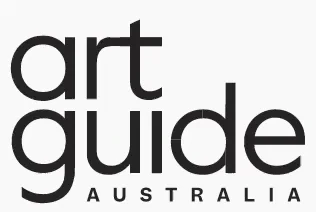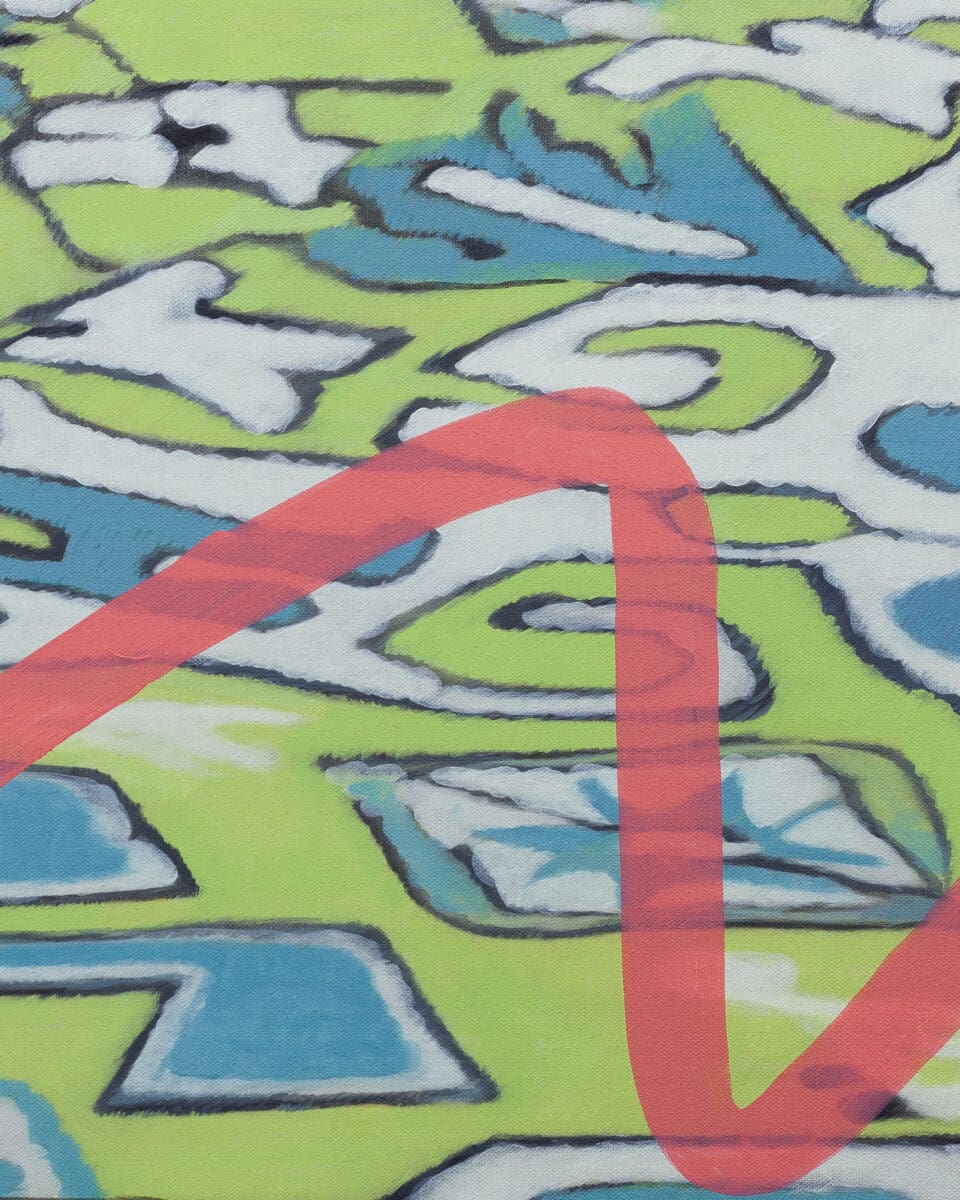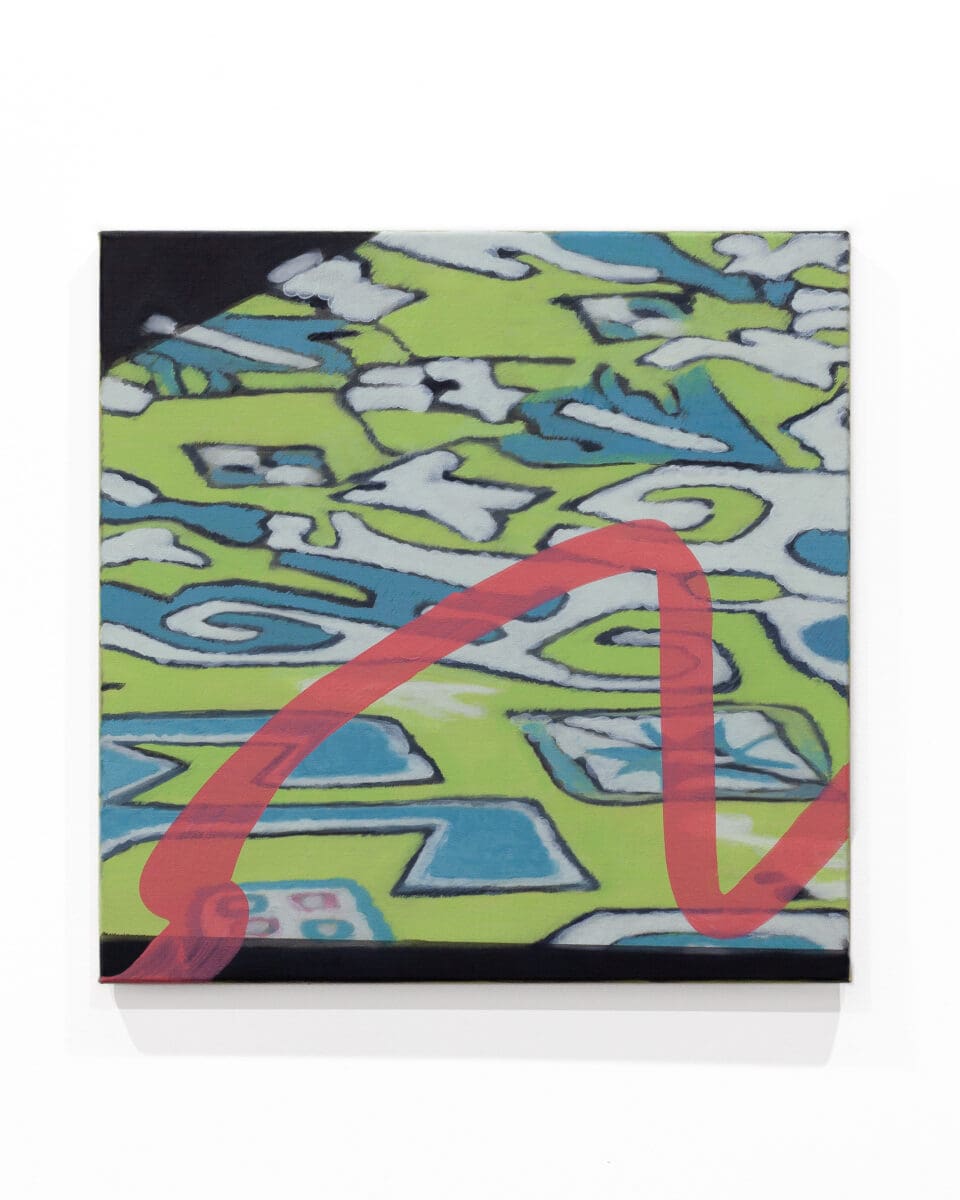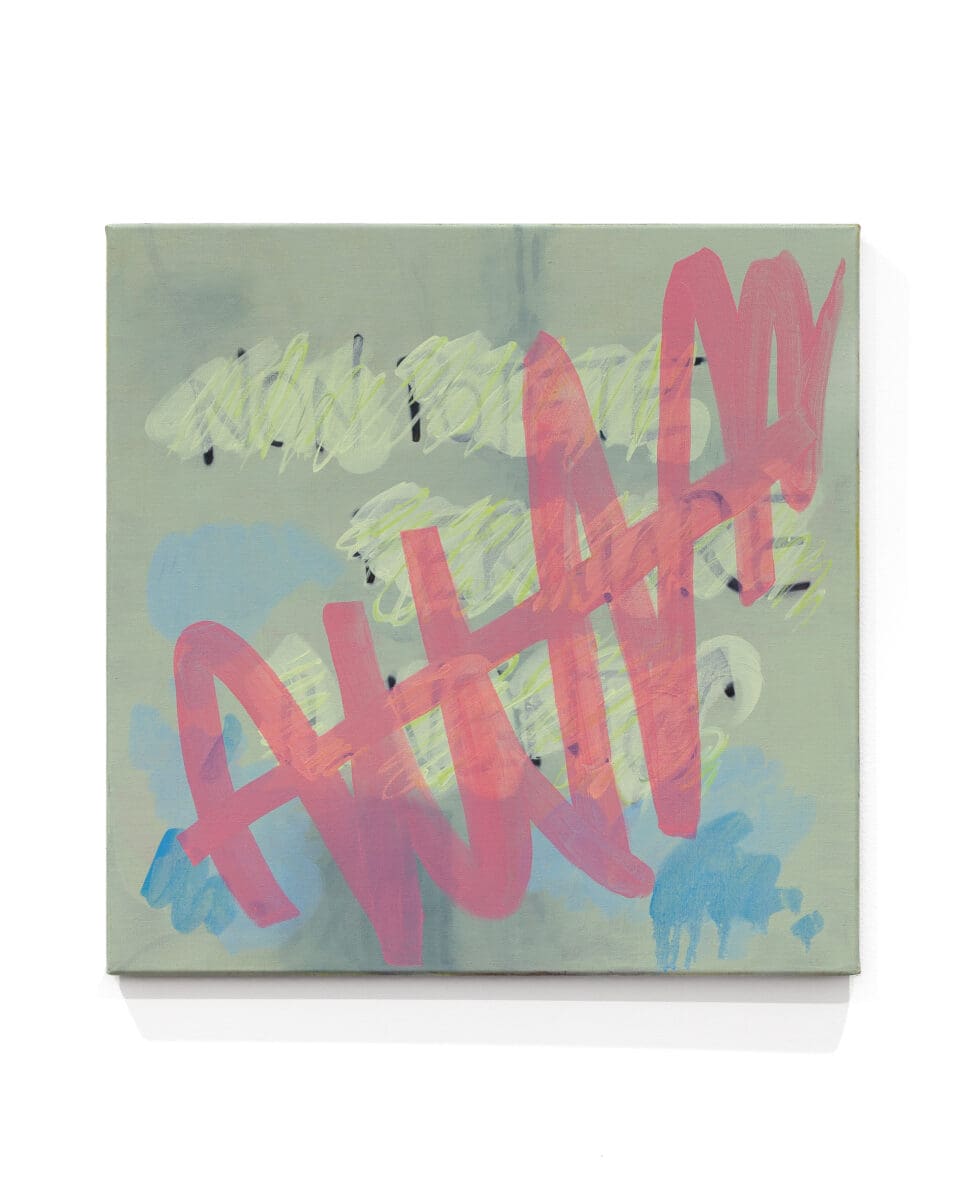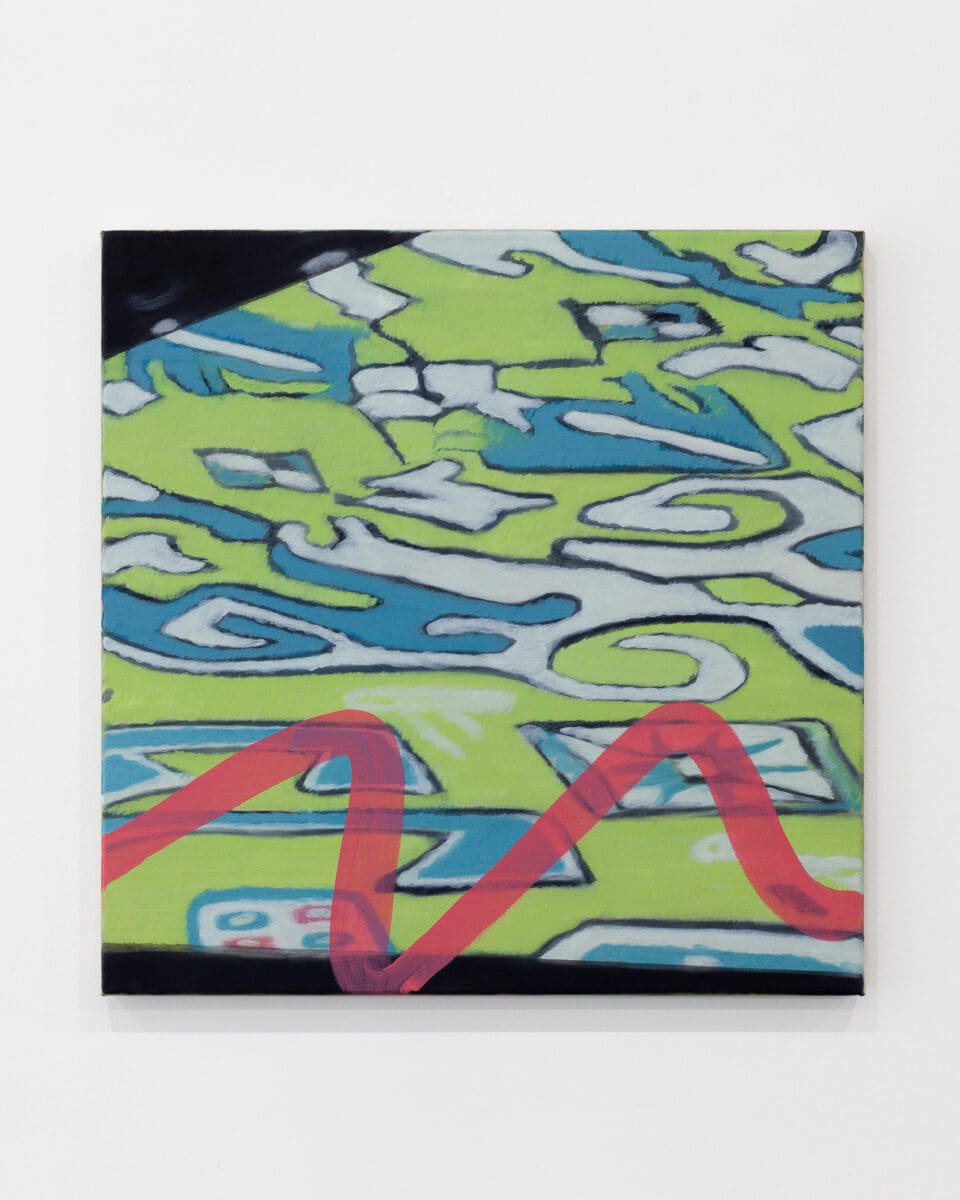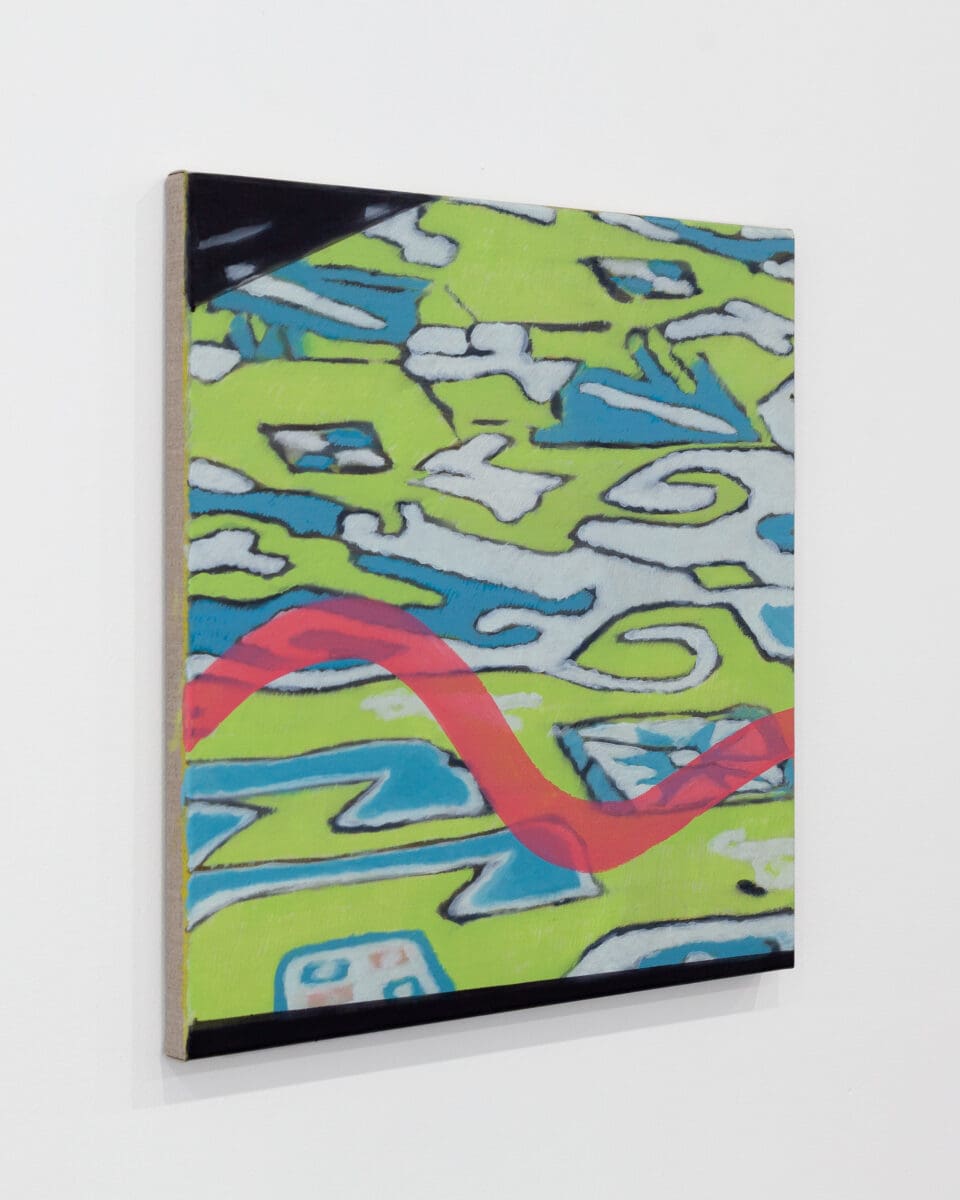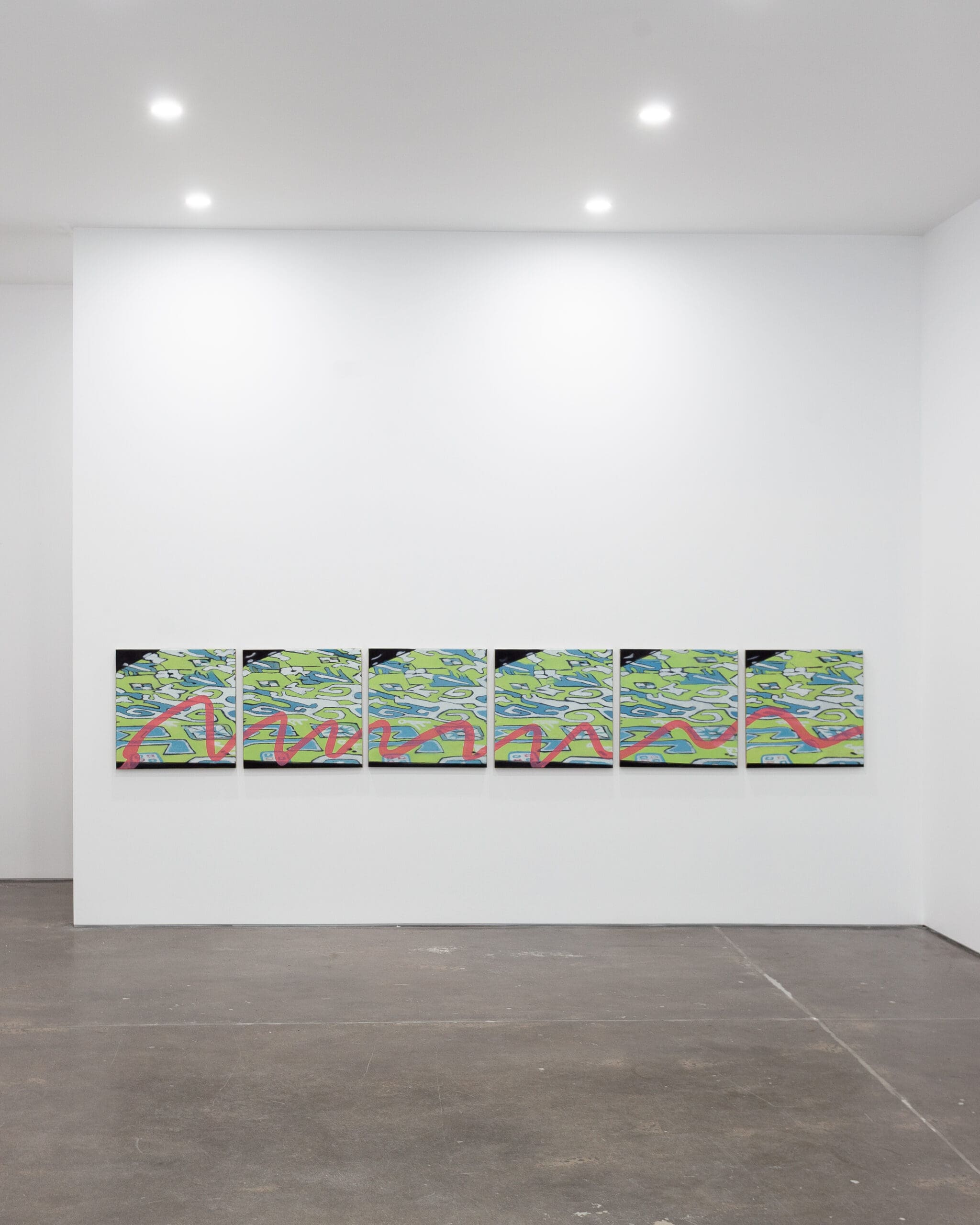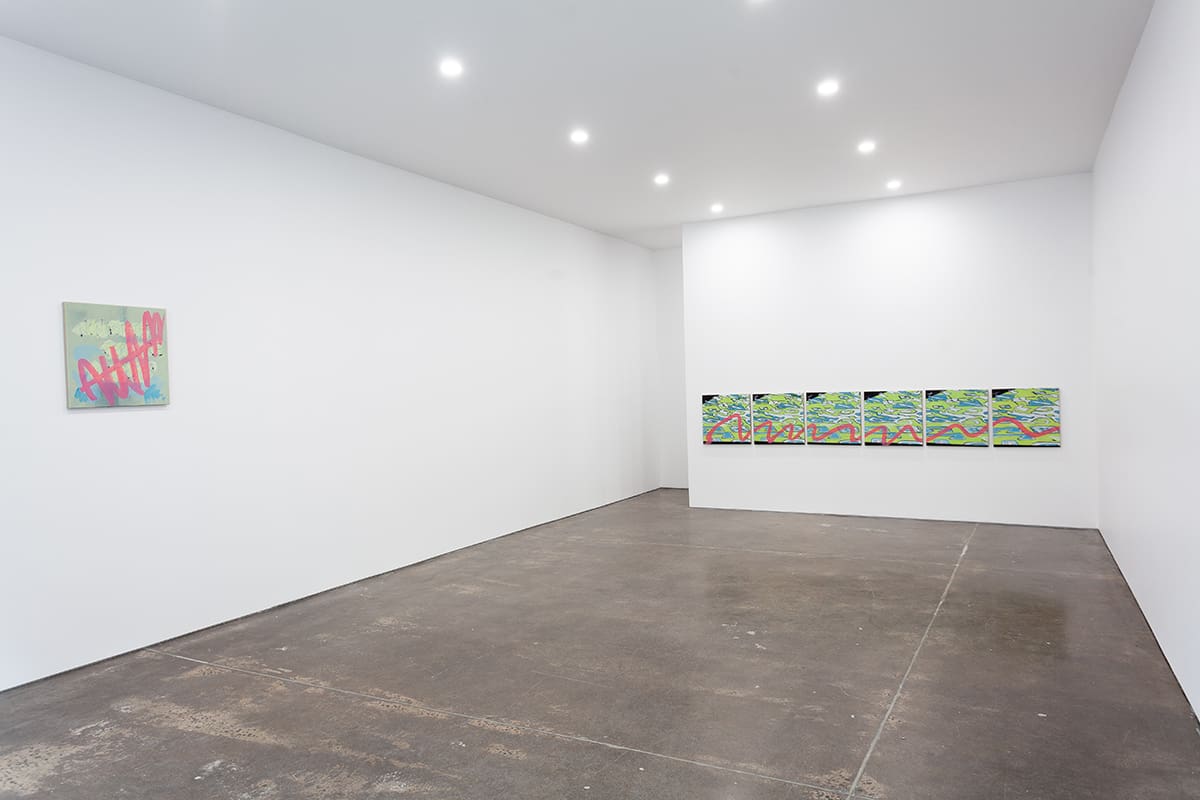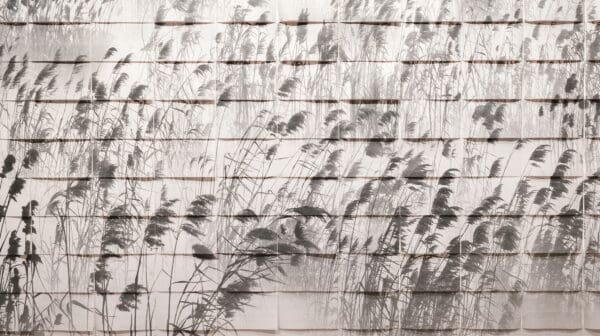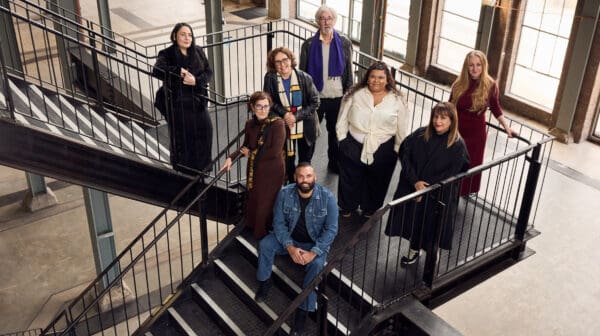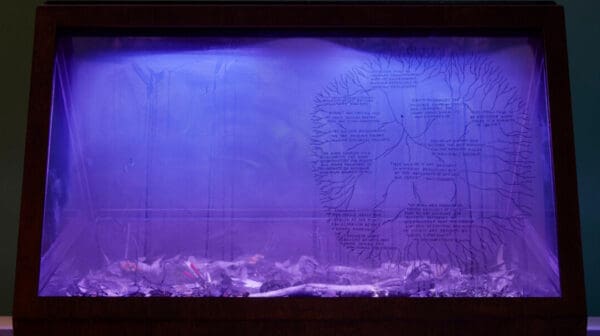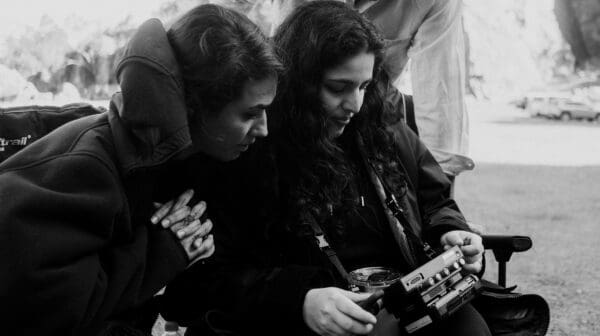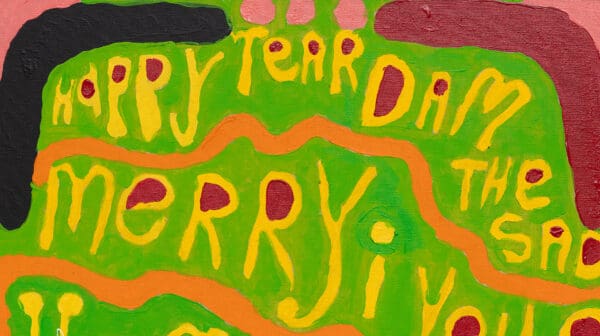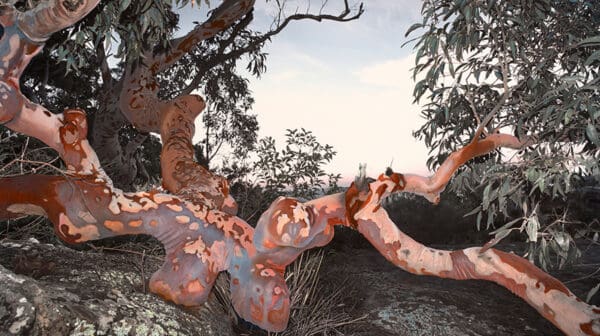On a Monday afternoon in North Melbourne, I negotiated space on Lisa Radford’s couch with her Great Dane mix Tsuki, while the artist prepares lunch in her kitchen. The soup arrives and Tsuki concedes her usual corner (I didn’t realise it was her corner) choosing to lay with as much distance from me as she can. Radford is tired having just opened her solo exhibition, Parelament Step Count, at Animal House Fine Arts in Brunswick on the Friday prior. This came at the tail end of the exhibition she curated at Gertrude Contemporary as part of the organisation’s forty-year celebration.
Responding to the third decade of Gertrude’s existence, 2005–2015, Of Stadiums and Construction Sites (Ne change rien pour que tout soit différent) was a mammoth undertaking that included both new and historical works. A key piece in the exhibition, luckily there’s no inside (2025), was a performance by Jakarta-based artist Ardi Gunawan who was a Gertrude studio artist in 2008. Radford worked closely with Gunawan to produce the “zombie muppet” costumes worn by VCA students on the opening night, each of which represented key artists in Gunawan’s Australian peer group—including Sam Martin, Spiros Panigirakis, Merryn Lloyd. The discursive production of the work between Gunawin and Radford and the representation of friendship circles speaks to the way Radford operates as a curator and artist, centring social networks within her practice.
Radford prefers “circulation” to “collaboration,” because “I’m interested in things in circulation be it images or ideas or objects. Where do they land? What happens when they land next to each other? It’s not about forcing things or compromising or inventing just rearranging.”
As a painter, Radford still manages to include conversations with peers in her work. At Parelament Step Count there is a nod to her late friend, the artist Damiano Bertoli. The painting Francesca (2025) replicates a photo of graffiti that Bertoli sent to Radford from Italy that reads in Italian “you can’t stop the wind.” This is a line from Canzone del maggio, a song about May ‘68, one of the most significant uprisings in European history. Radford describes Parelament Step Count as about “collectives and failure.” Starting with this Italian protest song, the exhibition references collective action throughout, which connects it back to cooperation. An editioned recording available on cassette, Parelament Step Count (2025) was made alongside sound artist Matthew Davis. Each side of the tape features an eight-second looped recording by Davis—on one side we have a gaggle of mutton birds on Phillip Island, and on the other side chanting from the 2015 Greek anti-austerity protests. But back to Francesca. To finish this work, Radford painted translucent yellow paint and a pink squiggly line over the Italian text, making it difficult to read. I ask Radford why she has undermined the legibility like this. “There is an absurdity to it. A nothing. Because painting’s stupid,” she says matter-of-factly.
For someone who has made a career from painting, Radford’s statement should perhaps not be read at face value. We might do better to interpret what she says as “the action of painting changes nothing.” The other paintings in Parelament Step House shed some light on Radford’s declaration. These six works, each titled Proxy (1-6, 2025), show the carpet in the Hague courtroom where the 2024 South African ICJ hearings that saw genocide charges levelled against Israel took place. Radford watched the proceedings live on her laptop and photographed the scene, creating an image of an image that showed the entire courtroom in action. She then zoomed in on the carpet on the courtroom’s floor, blurry and abstracted. There is a certain futility to Radford’s repetitive gesture. This is where the logic of failure enters her work. She likens it to the gesture of the maneki-neko, the Japanese cat figurine whose paw swings back and forth as an auspicious symbol of luck.
But for Radford, this back-and-forth action also represents a succession of nothingness, which she uses as an analogy for what her paintings are doing. “The repetition doesn’t say anything,” she says.
The repetition of history and the inability of humankind to learn from past errors contributes to the emptiness that Radford conveys in her paintings. And yet, in true Radford style, there is always a level of undoing and humour in her works. The squiggly pink line seen in Francesca features, here, again connecting all six paintings and somehow undermining them. Those who know Radford will agree she is self-deprecating and this comes through in her work. She recalls a prominent Melbourne gallerist’s remark about her act of undoing, such as the pink line in these paintings. “She said, ‘You make this beautiful painting and then you have to ruin it.’”
“Ruin” seems harsh, but Radford does her best to avoid self-aggrandisation. Her iconic Furniture Paintings (2010), for example, are a masterclass in technique, which the artist quickly negated by virtue of the subject matter—the upholstery designs found on public transport seating.
Radford drives me home with Tsuki happily squashed into the back seat of her car. Parelament Step Count is a small show that revolves around Radford’s skilled hand, but it includes the input of so many. Bertoli and Davis feature, alongside artist and writer Masato Takasaka and Animal House’s director Matthew Ware, who Radford has unofficially mentored since he was an art student. Perhaps the ultimate lesson from Radford is that even if the world is going to pieces on repeat you can always rely on friends—a cliché that the artist would almost certainly baulk at.
Lisa Radford: Parelament Step Count
Animal House Fine Arts
(Melbourne/Naarm VIC)
Until 23 August


